- Home
- Matthew Pearl
Dante Club
Dante Club Read online
Topography of Hell
Bartolomeo di Fruosino, c.1420
Courtesy of Bibliothèque Nationale, Paris
THE
DANTE
CLUB
A Novel
Matthew Pearl
RANDOM HOUSE NEW YORK
Contents
Frontispiece
Title Page
Dedication
Caution to the Reader
Canticle One
I
II
III
IV
V
VI
VII
Canticle Two
VIII
IX
X
XI
XII
XIII
XIV
Canticle Three
XV
XVI
XVII
XVIII
XIX
XX
XXI
Historical Note
Acknowledgments
About the Author
Copyright Page
To Lino, my professor, and Ian, my teacher
CAUTION TO THE READER
A PREFACE BY C. LEWIS WATKINS,
BAKER-VALERIO PROFESSOR OF THE CIVILIZATION AND LITERATURE OF ITALY AND RHETORICAL ORATION
Pittsfield Daily Reporter, “Community Notebook,” September 15, 1989
LEXINGTON BOY’S INSECT SCARE SPARKS “RENEWAL”
Search teams safely recovered Kenneth Stanton, 10, of Lexington, in a remote corner of the Catamount Mountains on Tuesday afternoon. The fifth grader was treated at Berkshire Medical Center for swelling and discomfort resulting from the deposit of larvae by initially unidentified insects nested in his wounds.
Entomologist Dr. K. L. Landsman of the Harve-Bay Institute Museum in Boston reports that the blowfly samples retrieved from the site are historically unknown to Massachusetts. More noteworthy, says Landsman, the insects and their larvae appear to represent a species that has been thought completely extinct by entomologists for nearly fifty years. Cochliomyia hominivorax, known commonly as the New World primary screwworm, was classified in 1859 by a French doctor on a South American island. By the end of the 19th century the presence of this dangerous species grew to epidemic levels, causing the deaths of hundreds of thousands of livestock throughout the Western Hemisphere and reportedly some human beings. During the 1950s, a massive American-engineered program successfully eradicated the species by introducing gamma-radiated sterile male flies into the population, ending the ability of the female flies to reproduce.
Kenneth Stanton’s scare may have contributed to what is known as a laboratory-assisted “renewal” of the insects for the purpose of research. “Though eradication was a wise public health initiative,” says Landsman, “there is much that can be learned in a controlled setting with new observational technologies.” Asked for his reaction to the taxonomic good fortune, Stanton replied, “My Science teacher thinks I’m great!”
You may wonder, referring back to the title page of this volume, how the above article could possibly relate to Dante, but you will see shortly that the connection is alarming. As a recognized authority on the subject of the American reception of Dante’s The Divine Comedy, I was contracted last summer by Random House to write, in return for their usual paltry fee, some prefatory remarks for this book.
The text of Mr. Pearl’s work derives from the true origins of Dante’s presence in our culture. In 1867, the poet H. W. Longfellow completed the first American translation of The Divine Comedy, Dante’s revolutionary poem of the hereafter. Presently, there exist more translations of Dante’s poetry into English than into any other language, and the United States produces more Dante translations than any other country. The Dante Society of America, of Cambridge, Massachusetts, boasts itself the oldest continuous organization in the world dedicated to the study and promotion of Dante. As T. S. Eliot remarked, Dante and Shakespeare divide the modern world between them; and Dante’s half of the world enlarges every year. Before Longfellow’s work, however, Dante remained all but an unknown entity here. We did not speak the language of Italian, nor did we teach it with any frequency; we did not travel abroad in any significant numbers, nor were there more than a sparse handful of Italians living in the entire United States.
Under the full force of my critical acumen, I found that beyond these essential facts, the extraordinary events narrated by The Dante Club advanced fable rather than history. However, searching the databases of Lexis-Nexis for confirmation of my appraisal, I discovered the startling newspaper notice, inserted above, from the Pittsfield Daily Reporter. Immediately contacting Dr. Landsman of the Harve-Bay Institute, I pieced together a fuller picture of the incident that occurred nearly fourteen years ago.
Kenneth Stanton had wandered away from the family fishing trip in the Berkshires and stumbled upon a strange trail of dead animals on an overgrown path: first, a raccoon with its navel engorged with blood, then a fox; farther in, a black bear. The boy afterward recounted to his parents a feeling like hypnosis as he faced the grotesque sights. He lost his balance and fell hard onto a jagged line of rocks. Left unconscious and with a fractured ankle, he was beset by the primary screwworm blowflies. Five days later, Kenneth Stanton, age ten, succumbed to sudden convulsions while recuperating in his bed. The autopsy found twelve maggots of the Cochliomyia hominivorax, one of the world’s deadliest insect species—extinct for fifty years, or so it was believed.
The reawakened species of fly, exhibiting a previously unreported capability to survive across climates, has been introduced since then to the Middle East, apparently through cargo shipments, and, as I write, decimates the livestock and economy of northern Iran. It has lately been theorized from scientific findings printed in last year’s Abstracts of Entomology that the divergent evolution exhibited by the flies originated in the northeastern United States circa 1865.
To the question of how it began there was no apparent answer—except, I now brokenheartedly believe, within the details of The Dante Club. For more than five weeks now, I have assigned the task of additional examination of Pearl’s manuscript to eight of the fourteen teaching fellows in my employment this semester. They have analyzed and cataloged the philological and historiographical precepts line by line, noting with flickering interest the minor mistakes that are the fault only of the author’s ego. With each passing day, we witness a bit more evidence of the remarkable gloom and glory encountered by Longfellow and his protectors the year Dante turned six hundred. I have waived any recompensation, for this was no longer a preface I set out to write but a warning. Kenneth Stanton’s death throws wide open the closed portal of Dante’s arrival to our world, of the secrets still lying dormant in our own age. Of these I only wish to caution you, reader. Please, if you continue, remember first that words can bleed.
Professor C. Lewis Watkins
Cambridge, Massachusetts
CANTICLE
ONE
I
John Kurtz, the chief of the Boston police, breathed in some of his heft for a better fit between the two chambermaids. On one side, the Irish woman who had discovered the body was blubbering and wailing prayers unfamiliar (because they were Catholic) and unintelligible (because she was blubbering) that prickled the hair in Kurtz’s ear; on the other side was her soundless and despairing niece. The parlor had a wide arrangement of chairs and couches, but the women had squeezed in next to the guest as they waited. He had to concentrate on not spilling any of his tea, the black haircloth divan was rattling so hard with their shock.
Kurtz had faced other murders as chief of police. Not enough to make it routine, though—usually one a year, or two; often, Boston would pass through a twelve-month period without a homicide worth noticing. T
hose few who were murdered were of the low sort, so it had not been a necessary part of Kurtz’s position to console. He was a man too impatient with emotion to have excelled at it anyway. Deputy Police Chief Edward Savage, who sometimes wrote poetry, might have done better.
This—this was the only name Chief Kurtz could bear to attach to the horrifying situation that was to change the life of a city—was not only a murder. This was the murder of a Boston Brahmin, a member of the aristocratic, Harvard-schooled, Unitarian-blessed, drawing room caste of New England. And the victim was more than that: He was the highest official of the Massachusetts courts. This had not only killed a man, as sometimes murders do almost mercifully, but had obliterated him entirely.
The woman they were anticipating in the best parlor of Wide Oaks had boarded the first train she could in Providence after receiving the telegram. The train’s first-class cars lumbered forward with irresponsible leisure, but now that journey, like everything that had come before, seemed part of an unrecognizable oblivion. She had made a wager with herself, and with God, that if her family minister had not yet arrived at her house by the time she got there, the telegram’s message had been mistaken. It didn’t quite make sense, this half-articulated wager of hers, but she had to invent something to believe, something to keep from fainting dead away. Ednah Healey, balanced on the threshold of terror and loss, stared at nothing. Entering her parlor, she saw only the absence of her minister and fluttered with unreasoning victory.
Kurtz, a robust man with mustard coloring beneath his bushy mustache, realized he too was trembling. He had rehearsed the exchange on the carriage ride to Wide Oaks. “Madam, how very sorry we are to call you back to this. Understand that Chief Justice Healey . . .” No, he had meant to preface that. “We thought it best,” he continued, “to explain the unfortunate circumstances here, you see, in your own house, where you’d be most comfortable.” He thought this idea a generous one.
“You couldn’t have found Judge Healey, Chief Kurtz,” she said, and ordered him to sit. “I’m sorry you’ve wasted this call, but there’s some simple mistake. The chief justice was—is staying in Beverly for a few quiet days of work while I visited Providence with our two sons. He is not expected back until tomorrow.”
Kurtz did not claim responsibility for refuting her. “Your chambermaid,” he said, indicating the bigger of the two servants, “found his body, madam. Outside, near the river.”
Nell Ranney, the chambermaid, welled with guilt for the discovery. She did not notice that there were a few bloodstained maggot remains in the pouch of her apron.
“It appears to have happened several days ago. Your husband never departed for the country, I’m afraid,” Kurtz said, worried he sounded too blunt.
Ednah Healey wept slowly at first, as a woman might for a dead household pet—reflective and governed but without anger. The olive-brown feather protruding from her hat nodded with dignified resistance.
Nell looked at Mrs. Healey longingly, then said with great humanity, “You ought to come back later in the day, Chief Kurtz, if you please.”
John Kurtz was grateful for the permission to escape Wide Oaks. He walked with appropriate solemnity toward his new driver, a young and handsome patrolman who was letting down the steps of the police carriage. There was no reason to hurry, not with what must be brewing already over this at the Central Station between the frantic city aldermen and Mayor Lincoln, who already had him by the ears for not raiding enough gambling “hells” and prostitution houses to make the newspapers happy.
A terrible scream cleaved the air before he had walked very far. It belched forth in light echoes from the house’s dozen chimneys. Kurtz turned and watched with foolish detachment as Ednah Healey, feather hat flying away and hair unloosed in wild peaks, ran onto the front steps and launched a streaking white blur straight for his head.
Kurtz would later remember blinking—it seemed all he could do to prevent catastrophe, to blink. He bowed to his helplessness: The murder of Artemus Prescott Healey had finished him already. It was not the death itself. Death was as common a visitor in 1865 Boston as ever: infant sicknesses, consumption and unnamed and unforgiving fevers, uncontainable fires, stampeding riots, young women perishing in childbirth in such great number it seemed they had never been meant for this world in the first place, and—until just six months ago—war, which had reduced thousands upon thousands of Boston boys to names written on black-bordered notices and sent to their families. But the meticulous and nonsensical—the elaborate and meaningless—destruction of a single human being at the hands of an unknown . . .
Kurtz was yanked down hard by his coat and tumbled into the soft, sun-drenched lawn. The vase thrown by Mrs. Healey shattered into a thousand blue-and-ivory shards against the paunch of an oak (one of the trees said to have given the estate its name). Perhaps, Kurtz thought, he should have sent Deputy Chief Savage to handle this after all.
Patrolman Nicholas Rey, Kurtz’s driver, released his arm and lifted him to his feet. The horses snorted and reared at the end of the carriageway.
“He did all he knew how! We all did! We didn’t deserve this, whatever they say to you, Chief! We didn’t deserve any of this! I’m all alone now!” Ednah Healey raised her clenched hands, and then said something that startled Kurtz. “I know who, Chief Kurtz! I know who’s done this! I know!”
Nell Ranney threw her thick arms around the screaming woman and shushed and caressed, cradling her as she would have cradled one of the Healey children so many years before. Ednah Healey clawed and pulled and spat in return, causing the comely junior police officer, Patrolman Rey, to intervene.
But the new widow’s rage expired, folding itself into the maid’s wide black blouse, where there was nothing else but the abundant bosom.
The old mansion had never sounded so empty.
Ednah Healey had departed on one of her frequent visits to the home of her family, the industrious Sullivans, in Providence, her husband remaining behind to work on a property dispute between Boston’s two largest banking concerns. The judge bid his family good-bye in his usual mumbling and affectionate manner, and was generous enough to dismiss the help once Mrs. Healey was out of sight. Though the wife wouldn’t do without servants, he enjoyed small moments of autonomy. Besides, he liked a drop of sherry on occasion, and the help was sure to report any temperance violations to their mistress, for they liked him but feared her deep within their bones.
He would start off the following day for a weekend of tranquil study in Beverly. The next proceeding that required Healey’s presence would not be heard until Wednesday, when he would railroad back into the city, back to the courthouse.
Judge Healey didn’t notice one way or another, but Nell Ranney, a maid for twenty years, since being driven out by famine and disease in her native Ireland, knew that a tidy environment was essential for a man of importance like the chief justice. So Nell came in on Monday, which was when she found the first splattering of dried red near the supply closet and another streaking near the foot of the stairs. She guessed that some wounded animal had found its way into the house and must have found the same way out.
Then she saw a fly on the parlor drapes. She shooed it out the open window with a high-pitched clicking of her tongue, fortified by the brandishing of her feather duster. But it reappeared while she was polishing the long mahogany dining table. She thought the new colored kitchen girls must have negligently left some crumbs. Contraband—which is how she still thought of the freedwomen and always would—did not care of actual cleanliness, only its appearance.
The insect, it seemed to Nell, gurgled loud as a train’s engine. She killed the fly with a rolled up North American Review. The flattened specimen was about twice the size of a housefly and had three even black stripes across its bluish green trunk. And what a phiz! thought Nell Ranney. The head of the creature was something Judge Healey would murmur over admiringly before tossing the fly to the wastebasket. The bulging eyes, of a vibrant orange color,
took up nearly half its torso. There was a strange tint of orange glowing out, or red. Something between the two, something yellow and black, too. Copper: the swirl of fire.
She returned to the house the next morning to clean the upstairs. Just as she crossed through the door, another fly sailed like an arrow past the tip of her nose. Outraged, she secured another of the judge’s heavy magazines and stalked the fly up the main staircase. Nell always used the servants’ stairs, even when alone in the house. But this situation called for rearranging priorities. She removed her shoes and her wide feet fell lightly over the warm, carpeted steps, following the fly into the Healeys’ bedchamber.
The fire-eyes stared out jarringly; the body curled back like a horse ready to gallop, and the face of the insect looked for that moment like the face of a man. This was the last moment for many years, listening to the monotonous buzz, that Nell Ranney would know some measure of peace.
She rumbled forward and smashed the Review against the window and the fly. But she had faltered over something during her attack, and now looked down at the obstacle, twisted on her bare foot. She picked up the tangled mass, a full set of human teeth belonging to the upper chamber of a mouth.
She released it at once but stood attentively, as though it might censure her for the incivility.
They were false teeth, crafted with an artist’s care by a prominent New York dentist to fulfill Judge Healey’s desire for a smarter appearance on the bench. He was so proud of them—told their provenance to anyone who would listen, not understanding that the vanity leading to such appendages should prevent any discussion of them. They were a bit too bright and new, like staring right into the summer sun between a man’s lips.
From the corner of her eye, Nell noticed a thick pool of blood that had curdled and caked on the carpet. And near that, a small pile of suit clothes folded neatly. These clothes were as familiar as Nell Ranney’s own white apron, black blouse, and billowing black skirt. She had done much needlework on his pockets and sleeves; the judge never ordered new suits from Mr. Randridge, the exceptional School Street tailor, except when absolutely essential.

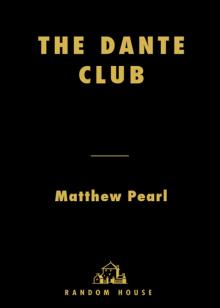 The Dante Club
The Dante Club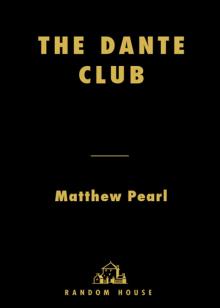 Dante Club
Dante Club The Poe Shadow
The Poe Shadow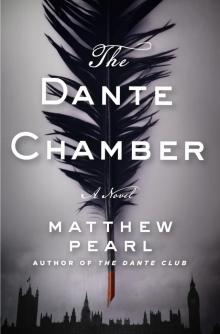 The Dante Chamber
The Dante Chamber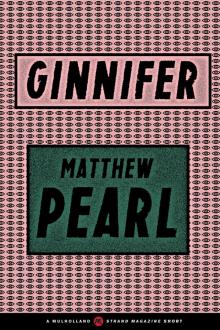 Ginnifer
Ginnifer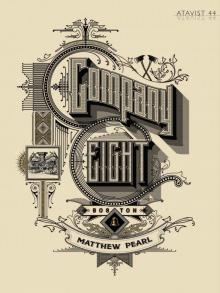 Company Eight
Company Eight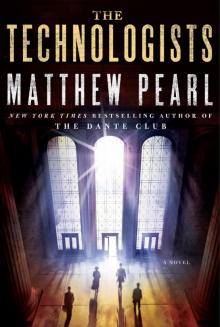 The Technologists
The Technologists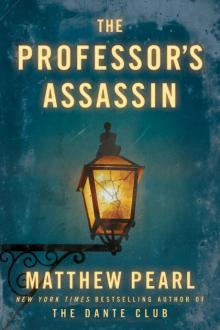 The Professor's Assassin
The Professor's Assassin The Last Bookaneer
The Last Bookaneer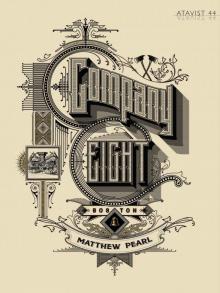 Company Eight (Kindle Single)
Company Eight (Kindle Single)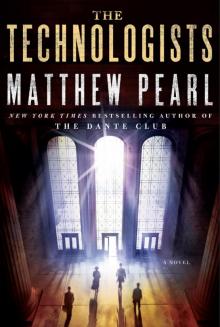 The Technologists: A Novel
The Technologists: A Novel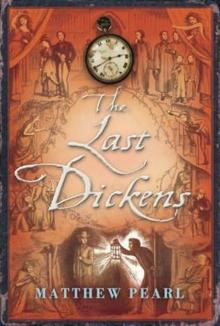 The Last Dickens
The Last Dickens